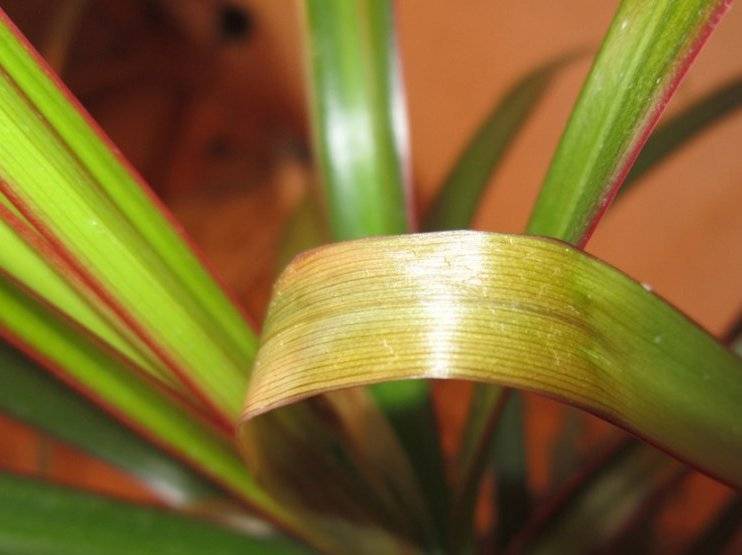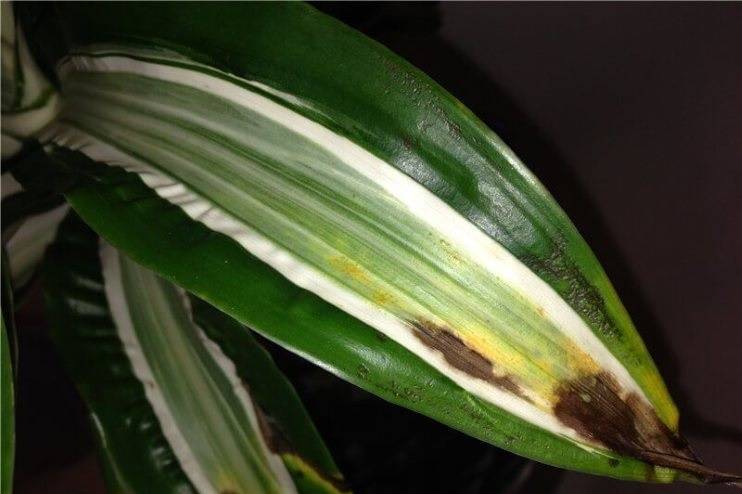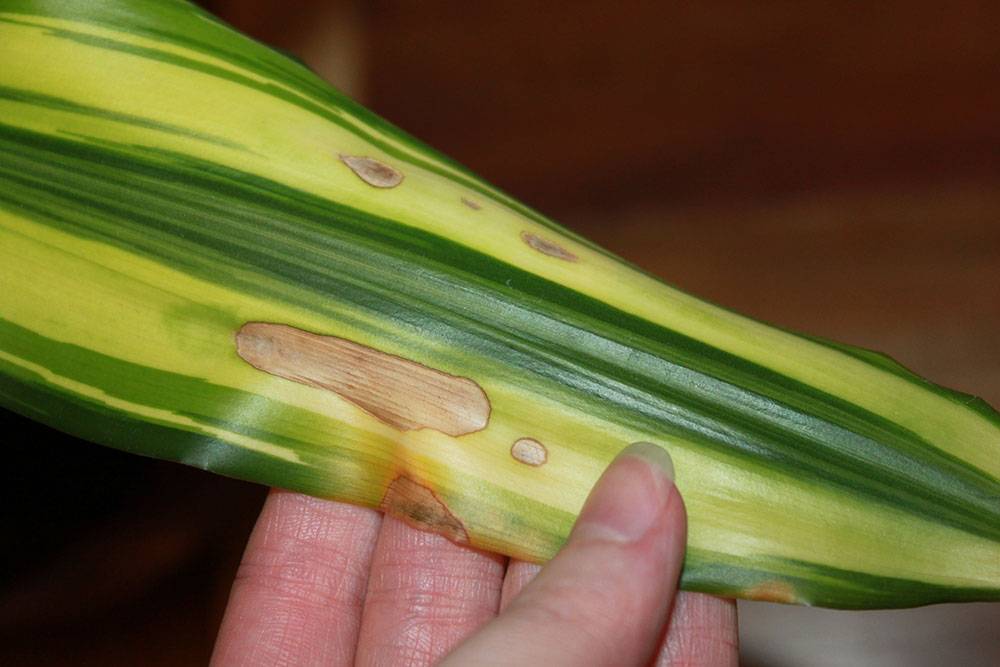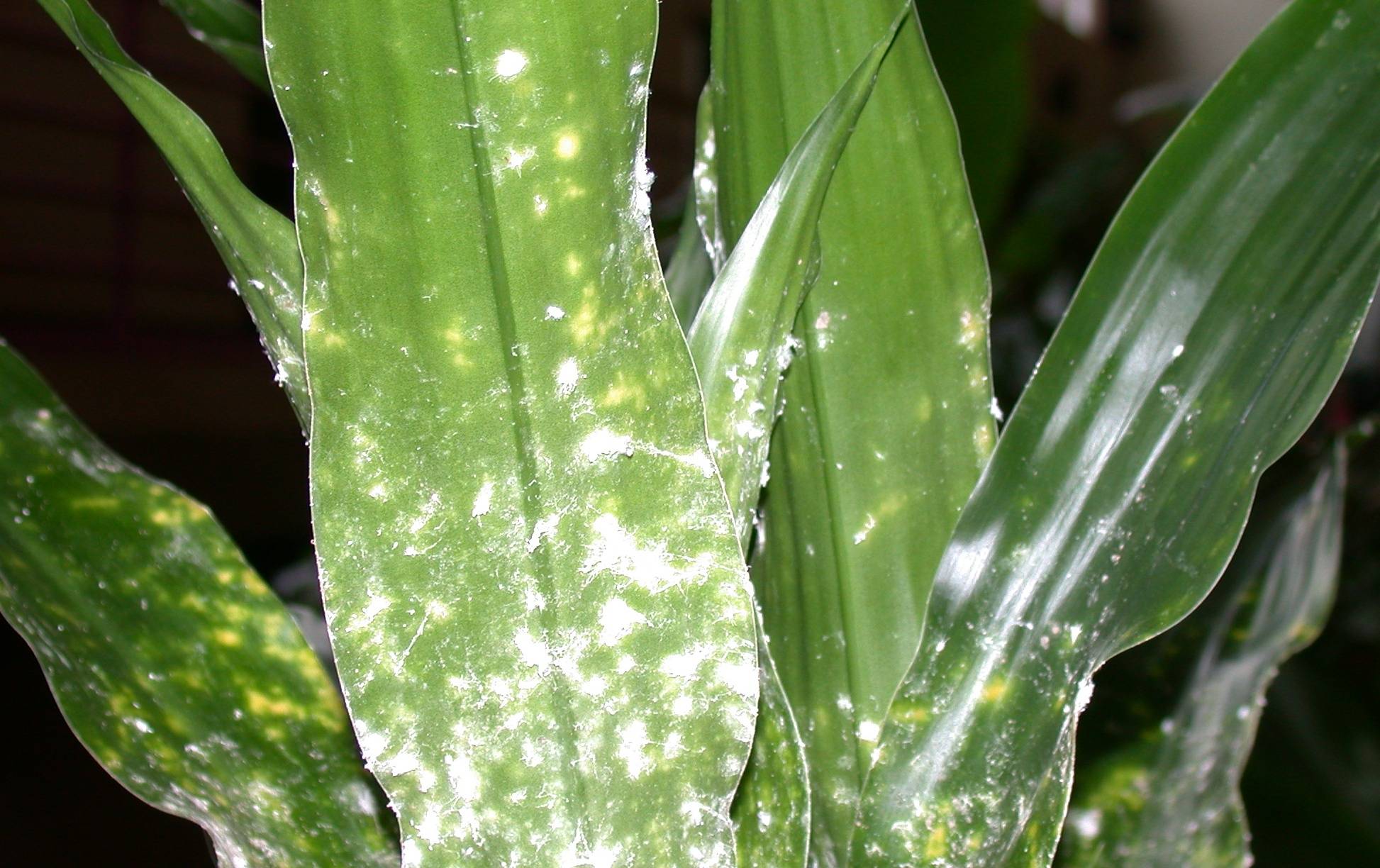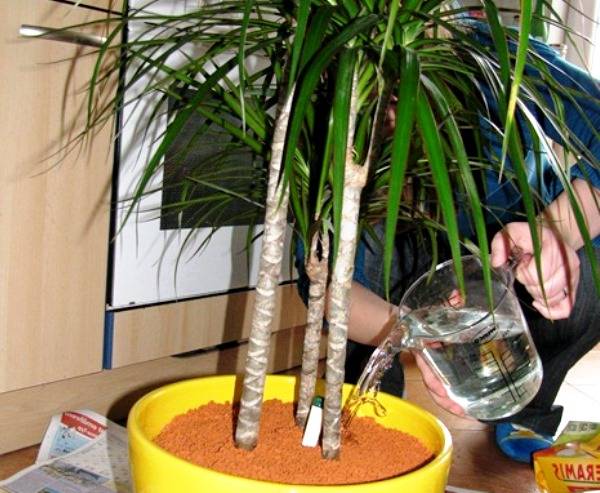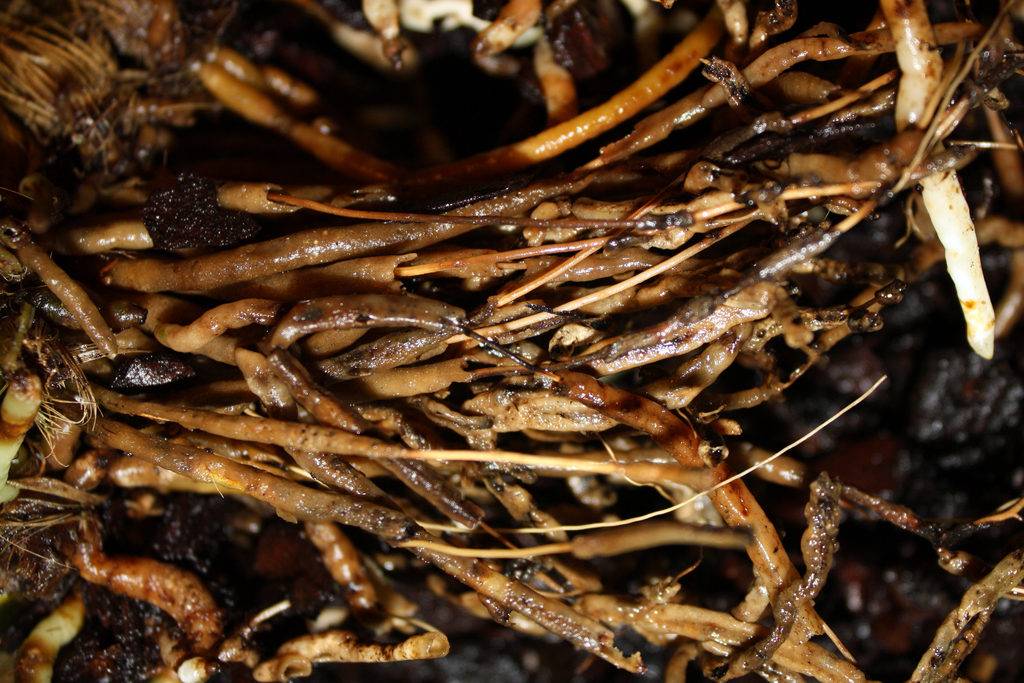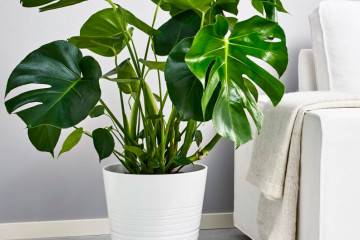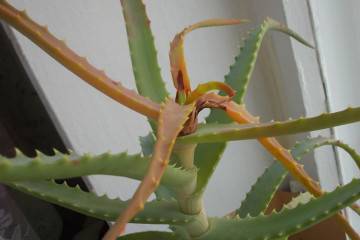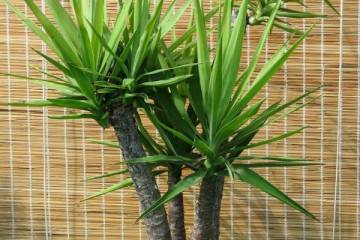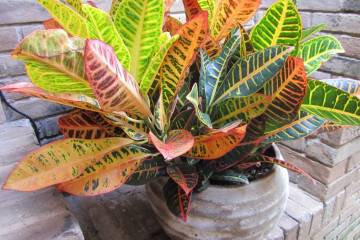Why do dracaena leaves turn yellow - reasons
Content:
Dracaena (from Lat. Dracaena) refers to potted plants that lovers of indoor flowers willingly grow. It grows well in apartments, houses and offices. Like any plant, dracaena can show signs of disease. One of the most common ailments is yellowing of the leaves. After solving the problem, the flower is restored, the yellow leaves fall off for some time, and in the next season new young foliage appears.
Dracaena leaves turn yellow and fall off: what could be the reasons
Dracaena gives any interior an exotic look. It is also called a palm tree or a false palm tree. The yellowing of the leaves can be caused by a number of reasons. There are cases when even the most experienced gardeners cannot understand why dracaena leaves turn yellow and how to help it. And sometimes even if you take proper care of it, this is not enough.
The most common causes of yellow leaves in dracaena are:
- natural aging. The lower leaves of the flower turn yellow and die off, and this is a normal process. With a high, elongated stem, the main trunk should be cut off so that new stems grow and tillering intensifies;
- excess moisture. Too much moisture is another cause of yellow leaves. Waterlogged soil and lack of drainage provoke root rot, which leads to a weakening of immunity and the development of diseases, the symptoms of which can be determined by the state of the leaves. Watering once a week can improve the condition and color of the leaves;
- lack of moisture. This factor also affects the condition of the flower and causes yellow leaves in the dracaena. Tropical plants grow well in conditions of high humidity, dry air in city apartments is contraindicated for them. The plant should be regularly sprayed and moistened, especially in winter when the air in the houses is too dry. You can put containers filled with water next to the pot to increase the humidity in the room;
- direct sunlight. They are harmful to the leaves as they cause them to turn yellow. It is important to choose the right place where the flower will stand. Dracaena must always be protected from the sun;
- lack of light. The plant in low light, starting from the lower leaves, turns yellow, then the leaves fall off. Sometimes the leaf blade turns yellow when one side is in the shade. Therefore, the flower should be periodically rotated for uniform light exposure;
- viral infection. If the plant is infected with a virus, yellow foliage will be the first symptom. The leaf blade and stem are also deformed. The infection is contagious, so it can spread to neighboring indoor flowers;
- pests. Spider mites, thrips, scale insects cause yellowing of the leaves and the appearance of additional symptoms such as brown spots on the stems, grayish plaques on the leaves or thin whitish marks. Pests suck out cell sap, so the leaves turn yellow and fall off.
Finding out why the leaves began to turn yellow is not so difficult. You should analyze the care of the flower and correct mistakes.
Diseases
The reason may be too dry air, too low temperature or sudden changes in the environment. If you move the dracaena, for example, from a cool street to a warm apartment, this can lead to cracking of the edges of its leaves. Also, do not expose the plant to temperature fluctuations. The yellowing of the leaf blade is guaranteed.
Dracaena disease can also result from excessive sun exposure, resulting in leaf burns. In turn, too little light can lead to fading and weaker coloration found in some varieties. Slowdown in growth, transparency of leaves, as well as their yellowing and dropping are possible consequences of improper reproduction of dracaena.
Most often, the flower is affected by infectious diseases. They are transmitted from neighboring plants and brought in with tools while loosening the soil. If you ignore the yellowing of the foliage and do not take action, then soon the dracaena will die.
Bacterial infection
A bacterial infection on dracaena manifests itself in dark brown, rapidly growing spots on the tips of the leaves. Sometimes the stem also turns black at the base and the rot moves to the petioles. Unpleasant odor may result. For mild infections, remove diseased leaves and spray the plant and substrate with a growth stimulant that reduces the development of pinpoint disease. Unfortunately, with a neglected disease, it is no longer possible to save the plant.
Fungal infection
May be bacterial or fungal based. Dracaena leaves appear yellow, brown, irregular spots ranging in size from 1 to 5 mm with a red border. Above them are black accumulations of fungal spores. It is important to remove the affected leaves and stop spraying the plant. To preserve dracaena, a series of biological products and fungicides should be used.
Mold in the soil
Mold in soil damages most indoor plants. Poor soil quality, lack of light, high humidity of the air and soil, and excessive watering contribute to its appearance. If mold is found in the spring, it will be advisable to transplant the plant into fresh soil with a loose substrate, preferably with a drainage layer.
Pests
Failure to follow the rules of care leads to the fact that parasites attack the dragon tree. Sucking out the juices from the leaves leads to the slow death of the flower.
Dracaena pests:
- thrips. This is the most dangerous parasite that attacks indoor plants. Its length is only 1.5 mm. Pests, settling on the foliage from below, begin to actively suck out cell sap. Females gnaw through tissue, which causes yellowing of the leaf blade. As a result, the foliage dries and falls off. High room temperature leads to their rapid reproduction. To save the flower, dracaena leaves are sprayed with soapy water and covered with a plastic bag. Also, the sticky trap reduces the number of pests. In addition, drugs such as spark, fitoverm help;
- mealybugs. This insect can be seen with the naked eye. From above it is covered with a white waxy coating. Females and larvae suck sap from cells, disrupting flower development. Moving quickly, they leave behind a whitish coating. Using a toothbrush soaked in soapy water can remove wax marks of parasites.Akhtar, fitoverm or calypso will help save dracaena in case of severe damage;
- shield. A common parasite among indoor plants. This arachnid is covered with a protective shield on top. The female lays a huge number of larvae, which, like adults, are covered with shields. They attach securely to foliage and suck sap out of it. Dracaena stops developing, turns yellow, dries up and dies. Processing is carried out with a sponge and methyl alcohol (very carefully). After weakened pests, they are destroyed with drugs such as Inta-CM or Aktara. The yellow leaves of the plant must be removed.
Soil moisture
Dracaena is a plant that came to Russia from countries where drought alternates with heavy rains. This led to the fact that the plant acquired special properties that make the flower resistant to irregular watering. However, these changes that nature gave the flower become a huge disadvantage when the plant is in a constantly humid environment.
The best way to water this plant is by the immersion method:
- Partially fill a sink or large container with water.
- Place the pot. The water should reach the level of the soil in the pot.
- Soak the pot with dracaena in water for 7-10 minutes.
- Lift the pot and place it on the wire rack so that any excess water can drain off.
- When dripping has stopped, return the plant to its place.
You can water with water next time only when the soil is completely dry. To check, you should deepen your finger 5-8 cm. It should be dusty and dry. If there is even a little moisture left, do not water. It is important to periodically loosen the substrate. This will saturate it with oxygen and become a good prophylaxis against diseases.
In winter, the dracaena is at rest. At this time, the same rules apply as above, except that it may take up to a month for the soil to dry after a previous watering. You can water every 15-30 days. You don't need to wet the soil weekly.
Air temperature
Dracaena is an exotic plant native to North Asia and Africa. She loves warmth, so the room should have a constant temperature in the range of 25-30 ° C. If the readings on the thermometer drop below 12 ° C, this can lead to the death of the flower. The pot should be placed in a bright place, but with diffused light. Direct sunlight is not allowed.
Decay of roots
The fact that the leaves began to turn yellow may indicate that the roots began to rot due to an excess of moisture.
How to understand that the land is waterlogged:
- damp, dry soil smells of dampness and mold;
- deepening your finger 2 cm, you can feel that the soil is damp;
- when using mulch, it signals an excess of moisture by blackening;
- there will be stagnant water in the container under the pot.
Other possible problems
Most often, the leaves of a houseplant turn yellow due to improper watering or excess sunlight. But there are others that novice gardeners may not be aware of.
Among them:
- cold and drafts have a negative effect on tropical plants. Dracaena do not like to grow near air conditioners, vents and open windows, and every movement of air masses is immediately reflected in the appearance of the plants: yellow leaves or pale spots appear between veins. It is better to place an indoor flower at home in a quiet place;
- transfer.In order for the flower to grow well and have abundant foliage, it must be repotted periodically. If the leaves of the plant begin to turn yellow, become stained or fall off, then it's time to change the pot and soil. Usually, when dracaena grows for more than three years in the same substrate, it does not grow well. The thing is that a huge amount of salts begins to accumulate in the old earth, which prevents the supply of nutrients to the aboveground part. To make the flower feel good, it is recommended to transplant every two years (in the spring). For looseness, a little sand or charcoal is added to the soil mixture. In addition, every year it is necessary to change the topsoil to a new one;
- nutritional deficiencies. If yellow leaves have begun to appear on the top of the plant, it is likely that this symptom is related to nutrients in the soil. It is caused by too much calcium in hard water or a lack of nitrogen in the soil. This problem can be solved with nitrogen fertilization or replacement of irrigation water;
- excess nitrogen fertilizers. Irrational use of dressings leads to leaf fall, sometimes they do not even have time to turn yellow.
Dracaena is a beautiful and beloved houseplant by many. With proper care, it pleases with its abundant bright green foliage. The flower begins to shed foliage two years later. These are natural processes. Yellowing of the leaf blade also does not always indicate developmental disorders or the presence of diseases. Old foliage on the lower tiers should turn yellow and then fall off. But profuse yellowing, dropping and additional symptoms should alert. After finding out the reason and working on the mistakes, the plant will begin to grow with renewed vigor.

